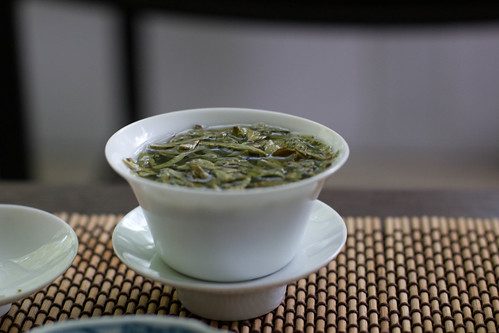
Our good friend at The Mandarin’s Tea has spent the better part of a month researching, experimenting, and practicing to share his findings on Long Jing with us. As you might expect, trying to pack the level of detail the Mandarin is known for into a short blog post makes for some very dense verbiage, and you might not catch everything that was intended.
Hoping for forgiveness, I am breaking down what I learned from this post into practical application.
You will need the following items.
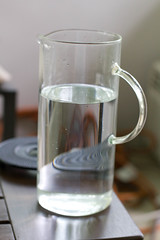
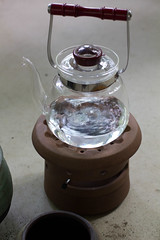
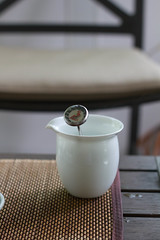
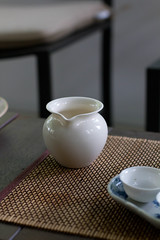
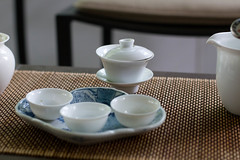
Good spring water - in the North East region of USA, we favor Poland Spring from Maine. Our friends in the LA Tea Affair select Crystal Geyser. Keep some at room temperature in a pitcher, and some freshly boiled.
A large pitcher and thermometer. Early infusions will be at 120F. With the right water, this makes a sweet finish and an incredibly lasting mouth feel. So, using your thermometer, mix boiled and cool water in your pitcher to maintain water around 120.
Optional - a second small faircup. At this temperature, you probably want to practice pouring directly into preheated cups, otherwise you will lose a lot of heat in the transfer and be drinking cold tea.
I used the boiled water to preheat all of my utensils - a small gaiwan and some cups before begining.
Knowing the low density of big fluffy Long Jing leaves, I filled my gaiwan half way. Starting at 10 seconds, experiment with slowly increasing the time or temperature. Not much, though! Focus on the sweetness and lingering taste more than trying to force out something upfront from the tea.
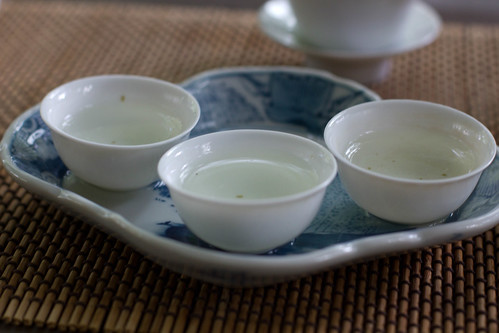
Prepared in this fashion the liquor and taste are both very light, but you will be enjoying the calm feeling and returning sweetness long after you leave the tea table.